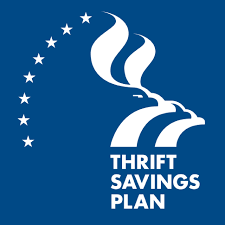The primary reason we contribute to our Thrift Savings Plan account is so that we can begin withdrawing from it at some point in the future. In addition, most of us view our TSP balance as a source of monthly income to augment our government annuity and Social Security (both of which are also paid monthly).
If we want to replace 80% of our pre-retirement income (as many financial advisers recommend), the great majority of us will fall short of that objective if we rely only on an annuity and Social Security. As a result, many retirees choose to receive TSP payments regularly.
In fact, over half of the separated employees choose a TSP withdrawal option that offers recurring income. Two income-generating withdrawal options are available: installment payments and a TSP life annuity. Installment payments can be made monthly (most common), quarterly, or annually. With installment payments, your money will stay in the TSP, where it’ll (hopefully) grow. A TSP life annuity involves withdrawing money from your TSP account and using it to buy a single premium immediate annuity (paid monthly) from MetLife; you can use all or part of your TSP balance to buy the annuity.
So, what’s the distinction between installment payments and a life annuity? Though both options allow us to collect recurring payments, the rules are significantly different. The most significant distinction is that a TSP Life Annuity is an irrevocable option, whereas installment payments can be altered frequently. Individuals who use installment payments can start and stop payments at any time and adjust the amount of the installments many times per year.
The TSP life annuity ensures that you won’t run out of money over your lifetime; you won’t have to look after your investments. But unfortunately, there’s no guarantee with installment payments, and you must watch after your withdrawals to verify that you continue receiving payments.
Both installment payments and life annuities allow you to receive payments based on a certain amount of money (level payments) or your life expectancy (increasing payments).
The Thrift Savings Plan has various calculators, including the TSP Payment and Annuity Calculator, with which we came up with the following examples. Due to the ongoing repercussions of the Thrift Plan’s new system, this calculator is no longer available on TSP’s website (as of July 2022). In our calculations (completed in April, before the new system’s implementation), we estimated that a 57-year-old retiree had $350,000 in their TSP when they started withdrawals upon retirement. We also assumed they would live to be 90 years old and that any money remaining in their TSP account would grow at a rate of 5% per year. The annuity interest rate index was 2.075% – the rate for TSP annuities in February 2022.
Level monthly payments of $1,750 would remain until death at 90, leaving a $4,244 balance in the TSP account.
Monthly benefits would begin at $1,045 and would have reached $2,247 at 90, according to the IRS life expectancy chart. As a result, $295,069 would stay in the TSP account.
A monthly annuity with a basic level payment would earn $1,394 and keep paying that amount throughout the individual’s life. At death, there would be no funds left.
A basic increasing payment annuity would have started at $998 and grown to $1,887 at 90. At death, there would be no money.
Which option is most popular among separated federal employees? Monthly payouts are significantly more common than life annuities. Separated employees appear to prefer the opportunities for continuous development and the freedom to adjust their payouts that monthly payments provide over the certainty of the Life Annuity.
According to recent research, there are 1.2 million fewer workers than before the pandemic. However, it also said that if the pre-pandemic worker growth rate had remained, there would be 3.5 million more employees in the workforce today.
Contact Information:
Email: [email protected]
Phone: 2129517376
Bio:
M. Dutton and Associates is a full-service financial firm. We have been in business for over 30 years serving our community. Through comprehensive objective driven planning, we provide you with the research, analysis, and available options needed to guide you in implementing a sound plan for your retirement. We are committed to helping you achieve your goals. Visit us at MarvinDutton.com . Tel. 212-951-7376: email: [email protected].






 Financial Media & Marketing, LLC,
Financial Media & Marketing, LLC,